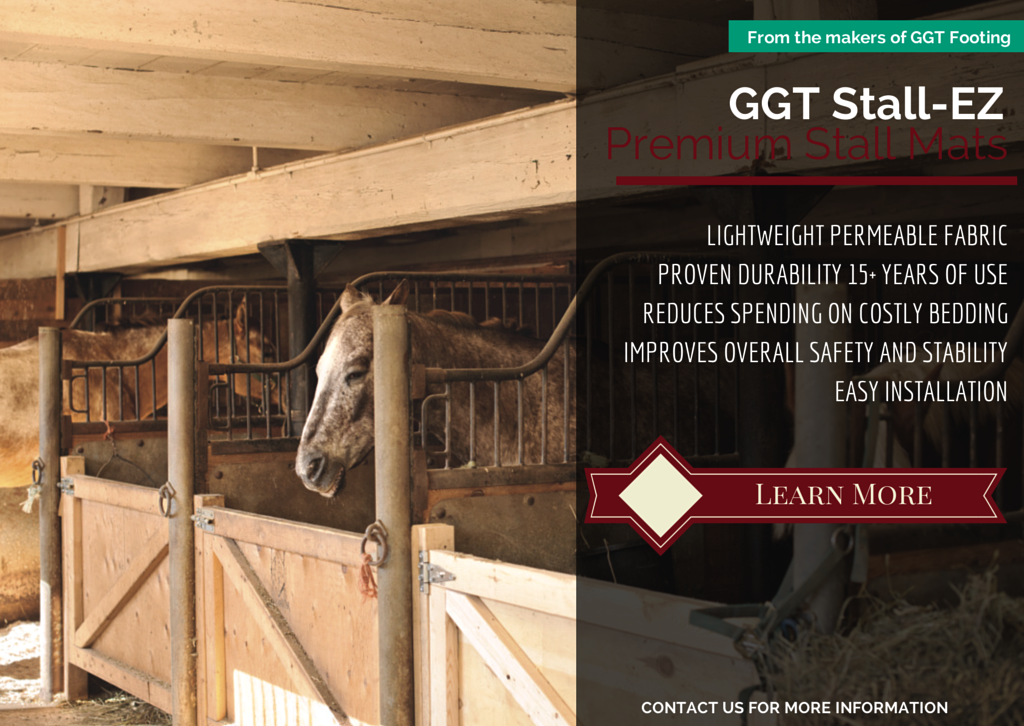Dressage riders invest a lot of time and money into their mounts. The last thing they want is for bad arena footing to create injuries that require their horses to be laid up for a period of time while it recovers. GGT Dressage Blend is the highest quality and safest footing for Dressage
Creating a Foundation for your Dressage Arena
One of the mistakes many people make when creating a dressage arena is only thinking about the top layer of footing. In order to create an arena that will provide years of good footing for your dressage partner, you need to make sure you create a good foundation layer. The best dressage arenas have two different foundation layers.

Premium GGT Dressage Footing will help ensure the safety of horse and rider
The first foundation layer, the sub-base layer, is generally created out of the soil naturally found in the area. Once the natural soil has been flattened, a base layer is placed on top. This base layers needs to be made out of something that’s not slippery, will stay in place, and isn’t slippery. The U.S. Dressage Federation recommends that this layer be created out of crushed stone.
Grounds owners who run dressage shows on their property have started to add a layer of a synthetic footing call geotextile between the sub-base and base layer of their arenas. They have found that even when the arena receives heavy work, the geotextile layer helps prevent the two foundation layers from shifting.
The Top Layer of Footing
There are several factors that need to be considered before settling on the top layer of footing for your dressage arena. Issues that play a role in what type of footing will be best include;
- How heavily the arena will be used
- Whether it’s an indoor or outdoor arena
- How much time the owner want’s to invest in maintaining the footing
Sand is the most popular choice of footing for indoor dressage arenas. The benefits of sand is that it’s readily available, is fairly inexpensive, it provides good traction, and it hold up well to heavy use and provides plenty of cushion for jumpers. If you decide to use sand, you should be aware that you’ll spend a great deal of time watering the arena to keep the dust down and you should also walk the arena at least once a day to make sure there aren’t any stones that could lame your horse. When you use sand, you will need to keep an eye on how deep the footing is. Most people with sand dressage arenas have found that they need to add a fresh layer of sand about once a year.
Crumb rubber footing has become a very popular choice in the dressage world. This type of footing is made out of recycled rubber products that have been ground up and are than mixed with sand. The great thing about crumb rubber fitting is that there’s virtually no dust and the footing requires very little maintenance. The downside to the rubber footing is that the rubber absorbs heat, and in some parts of the country the footing will become too hot for day time riding.
Grass footing is a popular choice in outdoor arenas. This is a low cost footing that works well if your outdoor dressage arena doesn’t get much use. The biggest drawback to grass arenas is that if the grass gets wet, the footing become slippery and you won’t be able to ride.
The GGT Dressage Blend is a combination of the Geo (multipurpose) blend and GGT Footing fiber. This unique blend is specifically engineered for Dressage. It keeps the surface fluffy, which helps avoid injury for horses and riders.
It’s important to make sure that the footing in your dressage arena doesn’t get more than a few inches deep. Dressage horses, especially upper level mounts have a difficult time performing properly when the footing gets too deep, plus the strain the deeper footing puts on the horses tendons and joints will lead to lameness problems, especially in older dressage horses.
If you have any questions about the type of dressage arena footing that best fits your budget, riding needs, and budget, you should contact us.


